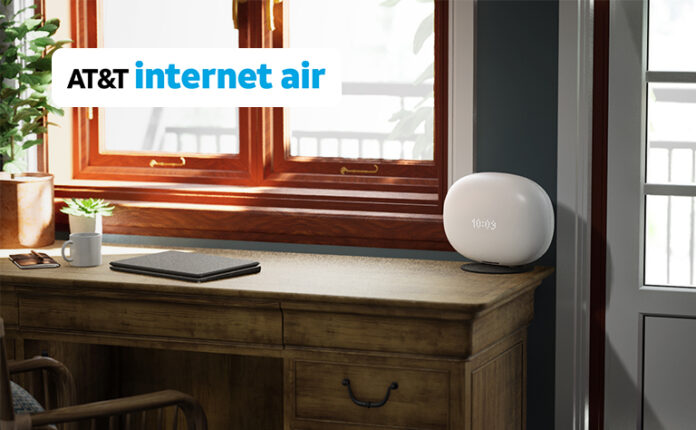AT&T says its ‘AT&T Internet Air’ home Wi-Fi services takes five steps and 15 minutes to self-install
AT&T is expanding its new Fixed Wireless Access internet service called “AT&T Internet Air,” which it has already rolled out to copper-network customers and is now offering more widely.
The service relies on the carrier’s 5G network where available, although it may also make use of AT&T’s LTE. The product can make use of C-Band spectrum but is not a millimeter-wave solution, according to a company spokesperson.
“Over the past year, our team has been hard at work identifying customer pain points, like legacy internet options, and created a solution by utilizing available network capacity in areas that are less densely populated while still providing a strong connection,” wrote Erin Scarborough, president of AT&T’s broadband and connectivity Initiatives, in a company blog post. “Thus, AT&T Internet Air was born.”
Scarborough added that it has “already rolled out AT&T Internet Air to existing copper-based customers with great success. As we begin to scale, we are hyper-focused on selecting locations with enough wireless coverage and capacity to deliver not only a great in-home experience, but also maintain a top-notch wireless service for our existing mobile users.”
Scarborough went on to say that the FWA offering “complements” AT&T’s fiber network and expands its internet service footprint into new locations including parts of of Los Angeles, California; Philadelphia, Pittsburgh and Harrisburg-Lancaster-Lebanon in Pennsylvania; Cincinnati, Ohio; Las Vegas, Nevada; the Phoenix/Prescott area in Arizona; Chicago, Illinois; Detroit and the Flint/Saginaw/Bay City area in Michigan; Hartford-New Haven, Connecticut; Minneapolis-St. Paul in Minnesota; Portland, Oregon; Salt Lake City, Utah; Seattle-Tacoma, Washington and the Tampa/St. Petersburg/Sarasota areas in Florida.
Unlike T-Mobile US’ aggressive focus on adding FWA home internet customers and Verizon’s use of FWA as a first-round use case for its millimeter-wave-based 5G network, AT&T executives have de-emphasized the relative importance of FWA compared to AT&T’s fiber and mobile wireless plays and have focused mostly on FWA’s potential use at the network edge, where the carrier doesn’t see the business case for deploying fiber. “The large consumption that we are anticipating over the next five years will be hard to meet with a wireless-only solution,” said AT&T’s COO (previously CEO of AT&T Communications) Jeff McElfresh back in the spring of 2021. He added, “There will be portions of the footprint that will not be economical to serve with fiber. And we would intend to put at the edge of our fiber network this wireless C-band asset, along with our other mid-band spectrum to serve some of the limited use cases that we think are available for a fixed wireless solution.” But, he said at the time, FWA was not the primary focus for the C-band or for AT&T’s overall strategy to serve broadband demand.
AT&T emphasized the speed and ease of its self-installation process for AT&T Internet Air, which relies on a QR code and the AT&T Smart Home Manager app to set up the service with the strongest connection; the carrier also offers add-on Wi-Fi extenders as part of the service, to ensure that the FWA-backed Wi-Fi signal is spread throughout a customer’s home. The service is being offered for $55 a month plus tax, and AT&T says that it has “no overage fees, no price increase at 12 months, no equipment fees and no annual contract.” The service also qualifies for the Federal Communications Commission’s Affordable Connectivity Program, which provides qualifying households with up to $30 a month (or up to $75 per month on Tribal lands) to defray the cost of home broadband service.

